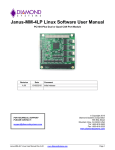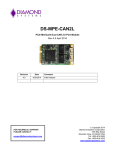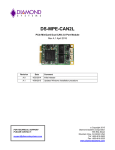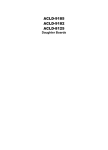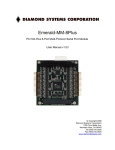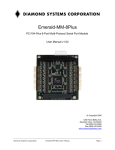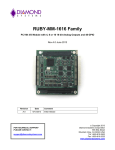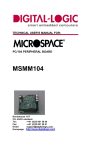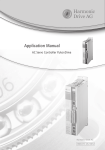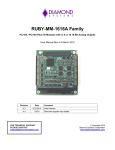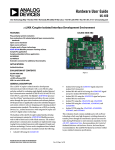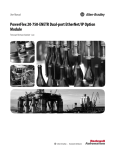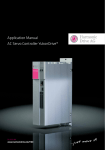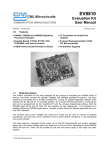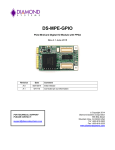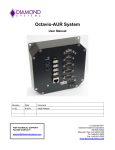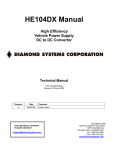Download Janus-MM-4LP User Manual - Diamond Systems Corporation
Transcript
Janus-MM-4LP User Manual PC/104-Plus Dual or Quad CAN Port Module Revision Date A.00 10/28/2015 Comment Initial release Copyright 2015 Diamond Systems Corporation 555 Ellis Street Mountain View, CA 94043 USA Tel 1-650-810-2500 Fax 1-650-810-2525 www.diamondsystems.com FOR TECHNICAL SUPPORT PLEASE CONTACT: [email protected] Janus-MM-4LP User Manual Rev A.00 www.diamondsystems.com Page 1 CONTENTS 1. 2. Important Safe Handling Information .............................................................................................................3 Introduction .......................................................................................................................................................4 2.1 Description .....................................................................................................................................................4 2.2 Features .........................................................................................................................................................4 2.3 Operating System Support ............................................................................................................................4 2.4 Mechanical, Electrical, Environmental ...........................................................................................................4 3. Functional Overview .........................................................................................................................................5 3.1 Functional Block Diagram ..............................................................................................................................5 3.2 Mechanical Board Drawing ............................................................................................................................6 3.3 Key Subsystems ............................................................................................................................................7 3.3.1 CAN Controllers ....................................................................................................................................7 3.3.2 CAN Transceivers .................................................................................................................................7 3.3.3 Isolation .................................................................................................................................................7 3.3.4 Digital I/O ..............................................................................................................................................8 3.3.5 Power Supply ........................................................................................................................................8 3.3.6 Multi Host Interface ...............................................................................................................................8 3.3.7 PCI Bus Interface ..................................................................................................................................9 3.3.8 PCI Configuration Space ......................................................................................................................9 3.3.9 ISA host Interface .............................................................................................................................. 10 3.3.10 Programmable Chip Selects .............................................................................................................. 10 4. Board Layout .................................................................................................................................................. 11 4.1 Connector List............................................................................................................................................. 12 5. Connector Pinout and Pin Description ........................................................................................................ 13 5.1 CAN ............................................................................................................................................................ 13 5.2 Digital I/O .................................................................................................................................................... 13 5.3 ISA Connector ............................................................................................................................................ 14 5.4 PC-104 ........................................................................................................................................................ 15 6. Jumper Configuration ................................................................................................................................... 16 6.1 Termination Jumpers .................................................................................................................................. 16 7. Driver installation........................................................................................................................................... 20 7.1 Installing the Software ................................................................................................................................ 20 7.2 Setting the Baud Rate ................................................................................................................................ 21 7.3 Setting the CAN ID and Message Length .................................................................................................. 22 7.4 Writing a Message ...................................................................................................................................... 23 7.5 Viewing Messages ...................................................................................................................................... 24 8. Port Configuartion and Management........................................................................................................... 26 8.1 API to Configure and Manage CAN ports. ................................................................................................. 26 8.1.1 Baud rate configuration. ..................................................................................................................... 27 8.1.2 CAN Receive Prototype. .................................................................................................................... 28 9. DIgital I/O COnfiguration ............................................................................................................................... 30 10. Specifications................................................................................................................................................. 31 Janus-MM-4LP User Manual Rev 0.9 www.diamondsystems.com Page 2 1. IMPORTANT SAFE HANDLING INFORMATION WARNING! ESD-Sensitive Electronic Equipment Observe ESD-safe handling procedures when working with this product. Always use this product in a properly grounded work area and wear appropriate ESD-preventive clothing and/or accessories. Always store this product in ESD-protective packaging when not in use. Safe Handling Precautions This board contains a high density connector with many connections to sensitive electronic components. This creates many opportunities for accidental damage during handling, installation and connection to other equipment. The list here describes common causes of failure found on boards returned to Diamond Systems for repair. This information is provided as a source of advice to help you prevent damaging your Diamond (or any vendor’s) embedded computer boards. ESD damage – This type of damage is usually almost impossible to detect, because there is no visual sign of failure or damage. The symptom is that the board eventually simply stops working, because some component becomes defective. Usually the failure can be identified and the chip can be replaced. To prevent ESD damage, always follow proper ESD-prevention practices when handling computer boards. Damage during handling or storage – On some boards we have noticed physical damage from mishandling. A common observation is that a screwdriver slipped while installing the board, causing a gouge in the PCB surface and cutting signal traces or damaging components. Another common observation is damaged board corners, indicating the board was dropped. This may or may not cause damage to the circuitry, depending on what is near the corner. Most of our boards are designed with at least 25 mils clearance between the board edge and any component pad, and ground / power planes are at least 20 mils from the edge to avoid possible shorting from this type of damage. However these design rules are not sufficient to prevent damage in all situations. A third cause of failure is when a metal screwdriver tip slips, or a screw drops onto the board while it is powered on, causing a short between a power pin and a signal pin on a component. This can cause overvoltage / power supply problems described below. To avoid this type of failure, only perform assembly operations when the system is powered off. Sometimes boards are stored in racks with slots that grip the edge of the board. This is a common practice for board manufacturers. However our boards are generally very dense, and if the board has components very close to the board edge, they can be damaged or even knocked off the board when the board tilts back in the rack. Diamond recommends that all our boards be stored only in individual ESD-safe packaging. If multiple boards are stored together, they should be contained in bins with dividers between boards. Do not pile boards on top of each other or cram too many boards into a small location. This can cause damage to connector pins or fragile components. Power supply wired backwards – Our power supplies and boards are not designed to withstand a reverse power supply connection. This will destroy each IC that is connected to the power supply (i.e. almost all ICs). In this case the board will most likely will be unrepairable and must be replaced. A chip destroyed by reverse power or by excessive power will often have a visible hole on the top or show some deformation on the top surface due to vaporization inside the package. Check twice before applying power! Overvoltage on digital I/O line – If a digital I/O signal is connected to a voltage above the maximum specified voltage, the digital circuitry can be damaged. On most of our boards the acceptable range of voltages connected to digital I/O signals is 0-5V, and they can withstand about 0.5V beyond that (-0.5 to 5.5V) before being damaged. However logic signals at 12V and even 24V are common, and if one of these is connected to a 5V logic chip, the chip will be damaged, and the damage could even extend past that chip to others in the circuit Janus-MM-4LP User Manual Rev 0.9 www.diamondsystems.com Page 3 2. INTRODUCTION 2.1 Description The Janus-MM-4LP-XT family of I/O modules offers two or four opto-isolated CANbus 2.0B ports plus 16 digital I/O lines. Models are available in both the PC/104-Plus and PC/104 form factors. Janus-MM-4LP is based on Xilinx Artix-7 FPGA. This core houses the CAN controller logic and digital I/O logic providing data rates up to 1Mbps. Each CAN port supports standard and extended frames as well as expanded TX and RX message queues for enhanced performance. Each port has its own combination isolator and transceiver chip. The 16 digital I/O lines have a selectable voltage level of +3.3V or +5V. 2.2 Features 2 or 4 CAN 2.0B compatible ports Data rates up to 1Mbps Supports standard 11-bit identifier and extended 29-bit identifier frames Extended TX and RX message queues for enhanced performance 16 8-byte transmit message queues 31 8-byte receive message queues 16 receive filters Galvanically isolated transceivers 500V port-to-host and port-to-port isolation Jumper selectable biased split termination for improved noise reduction 16 digital I/O lines Latching I/O connectors for increased ruggedness PCI and ISA bus interfaces 2.3 Operating System Support Windows Embedded 7 and Linux Ubuntu 12.04LTS Basic CAN driver included with APIs and monitor program 2.4 Mechanical, Electrical, Environmental PC/104-Plus form factor compliant, 3.55” x 3.775” (90mm x 96mm) without wings -40°C to +85°C ambient operating temperature Power input requirements: +5VDC +/- 5% PCI (3.3V) and ISA (5V) host interfaces MIL-STD-202G shock and vibration compatible Janus-MM-4LP User Manual Rev 0.9 www.diamondsystems.com Page 4 3. FUNCTIONAL OVERVIEW 3.1 Functional Block Diagram Figure 1 shows the block diagram for Janus-MM-4LP. Figure 1: Block Diagram Janus-MM-4LP User Manual Rev A.00 www.diamondsystems.com Page 5 3.2 Mechanical Board Drawing Figure 2 shows the mechanical drawing for Janus-MM-4LP. The module adheres to the PC/104-Plus standard. Figure 2: Mechanical Drawing Janus-MM-4LP User Manual Rev 0.9 www.diamondsystems.com Page 6 3.3 Key Subsystems 3.3.1 CAN Controllers The module has two or four CANbus 2.0 controllers implemented as FPGA cores inside a Xilinx Artix-7 FPGA. The FPGA core provides the following key features: Conforms to the ISO 11898 -1, CAN 2.0A, and CAN 2.0B standards Supports both standard (11-bit identifier) and extended (29-bit identifier) frames Supports bit rates up to 1Mbps Transmit message FIFO with a user-configurable depth of up to 64 messages Transmit prioritization through one High-Priority Transmit buffer Automatic re-transmission on errors or arbitration loss Receive message FIFO with a user-configurable depth of up to 64 messages Acceptance filtering with a user-configurable number of up to 16 acceptance filters Sleep Mode with automatic wake-up Loop Back Mode for diagnostic applications Maskable Error and Status Interrupts Readable Error Counters 3.3.2 CAN Transceivers The CAN transceivers are Analog Devices ADM3053 with a combination of isolation and transceiver. The device is powered by +5V. It generates isolated power to power the isolated side of the transceiver and the transceivers feature programmable slope control with a resistor. 3.3.3 Isolation Janus-MM-4LP supports 500V isolation between each CAN port and the host, and between each CAN port and the other via the ADM3053 isolated transceiver. An insulating film has been added to the bottom of the PCB in the isolated area for additional protection. Janus-MM-4LP User Manual Rev 0.9 www.diamondsystems.com Page 7 3.3.4 Digital I/O Janus-MM-4LP offers 16 digital I/O lines organized in two 8-bit I/O ports which are buffered with external data transceivers. The logic levels are jumper-selectable for 3.3V or 5V operation, and the DIO lines have jumperselectable pull-up / pull-down resistors. The entire circuit is enabled or disabled based on the settings of 3 I/O configuration jumpers. When the circuit is enabled, the 8-bit ports are accessed at registers Base + 0 (Port A) and Base + 1 (Port B), where Base is the base address selected with jumpers JA9-5. The ports power-up and reset to 0 and input mode. When a port is in output mode, its I/O pins are in output mode and reflect the value of the corresponding output registers, and these output values may also be read back during a read cycle to the port’s address. When a port is in input mode, its I/O pins are in input mode, and their values are read back during a read cycle to the port’s address. Each port’s direction is controlled by a bit in a control register at Base + 3. When a control bit is 0, the port is in input mode, and when it is 1, the port is in output mode. The control register powers up and resets to 0. The control register may also be read back during a read cycle to Base + 3. The FPGA has an output pin P_LED which can be used to drive an LED to indicate the FPGA is alive and responding to commands. P_LED is controlled by the LED bit in the register at base + 2. The pin logic level is the opposite of the register value. On power-up or reset the register bit is 1 and the pin is low, turning the LED on. A 0 turns the LED off. Offset 7 6 5 4 3 2 1 0 0 (R/W) DIOA7 DIOA6 DIOA5 DIOA4 DIOA3 DIOA2 DIOA1 DIOA0 1 (R/W) DIOB7 DIOB6 DIOB5 DIOB4 DIOB3 DIOB2 DIOB1 DIOB0 2 (W) LED 2 (R) 3 (R/W) 3.3.5 DIRB DIRA Power Supply The module is powered by +5V from the PCI and ISA connectors. It provides all other required voltages on board, including +3.3V for the CAN transceivers and the FPGA core voltages. The digital I/O connector provides power for external circuitry. The voltage is selected between 3.3V and 5V with a jumper which also controls the voltage of the digital I/O transceivers. The current is limited via a poly-switch thermal resettable fuse with a hold current capacity of 350mA. 3.3.6 Multi Host Interface The FPGA used on the board contains a PCI interface core and ISA interface core. Both the PCI and ISA interfaces are available. Only one bus interface can be active at any time. The active interface is selected with a bus power (+5V) signal from the PCI connector routed through a jumper to an input pin on the FPGA. If the FPGA detects a high on the input pin, the PCI interface is used; otherwise the ISA interface is used. If the PCI interface is not selected, it is inactive, and all FPGA PCI interface pins are tristated. Likewise, if the ISA interface is not selected, it is inactive, and all FPGA ISA bus interface pins are tristated. Janus-MM-4LP User Manual Rev 0.9 www.diamondsystems.com Page 8 3.3.7 PCI Bus Interface The FPGA includes a 32-bit 33MHz PCI core that interfaces to the PC/104-Plus PCI. The PCI host interface may be selected by a combination of power pin detection and jumper enable. The PCI interface includes 5 memory address ranges: four for the CAN controllers and one for the general purpose. The PCI interface is active when the FPGA detects the presence of the PCI bus and a jumper option is selected. Presence is detected by one +5V pin from the PCI connector connected to an input pin P_PCISEL on the FPGA via a jumper. This FPGA pin has a pull-down resistor connected to it. If the pin is high, the PCI bus is selected; otherwise the ISA interface is selected. The PCI interface uses 3.3V logic levels. No level translators are required to interface the FPGA to the PCI-104 bus. The PCI-104 connector must be labeled as a 3.3V only interface, since it is not 5V tolerant. 3.3.8 PCI Configuration Space The PCI configuration space requires the use of five base address registers or BARs with the following parameters: BAR no. Function Type Size 0 CAN1 Memory As required by CAN core 1 CAN2 Memory As required by CAN core 2 CAN3 Memory As required by CAN core 3 CAN4 Memory As required by CAN core 4 I/O block Memory 32 bytes (only the first 4 are currently used) The PCI configuration space has the following ID information: Vendor ID: 0x4453 Device ID: 0x1100 Janus-MM-4LP User Manual Rev 0.9 www.diamondsystems.com Page 9 3.3.9 ISA host Interface The FPGA includes an ISA host interface with 16-bit I/O addressing, 24-bit memory addressing, and 8-bit data. The interface is compatible with PC/104 implementations on embedded computers. It uses IRQ but no DMA. The ISA interface is 5V compliant. External level shifting transceivers are used between the FPGA and the PC/104 connector to provide this compatibility. All transceivers are one way except the data bus transceiver which is bidirectional. The direction of this bidirectional transceiver is controlled with the FPGA signal P_RD. When P_RD is low, the data direction is from the ISA connector to the FPGA (ISA write cycle addressing one of the active I/O windows or idle), and when it is high the direction is from the FPGA to the ISA bus (ISA read cycle addressing one of the active I/O windows). The ISA interface offers two memory address ranges for the CAN controllers and one I/O address range for the digital I/O interface described below. 3.3.10 Programmable Chip Selects The FPGA includes four programmable chip selects that can be used to drive external logic. These chip selects are enabled and the sizes of their I/O windows are controlled with the values of 3 configuration pins. When the PCIe or PCI interface is active, the Base address is determined by the BAR2 configuration at boot-up. When the ISA interface is active, the Base address is determined by the jumper inputs JA[9:5]. The state of these jumpers is compared to the correspondingly numbered address lines SA[9:5] during an I/O cycle to determine a match, with SA[15:10] = 000000. CS Config pins 0b000 0b001 0b010 0b011 0b101 0b111 Window size 0 bytes 4 bytes 16 bytes 20 bytes 8 bytes 36 bytes CS0 Inactive Inactive Base + 0-15 Base + 0-15 Base + 4 Base + 0-7 CS1 Inactive Inactive Inactive Inactive Base + 5 Base + 8-15 CS2 Inactive Inactive Inactive Inactive Base + 6 Base + 16-23 CS3 Inactive Inactive Inactive Inactive Base + 7 Base + 24-31 DIO circuit Inactive Base + 0-3 Inactive Base + 0-3 Base + 0-3 Base + 32-35 Each chip select is activated by an I/O read or write cycle to an address within the selected address range. When a chip select is active, it is low, and when it is inactive, it is high. On this board, the CS config pins are hardwired to option 001 so that only the DIO circuit is active at Base + 0-3. The JA[9:5] pins are connected to a jumper block with pull-down resistors. When a jumper is out, the pin is pulled low for a logic 0 input to the FPGA. When a jumper is inserted, the pin is shorted to +3.3V to provide a logic 1 to the FPGA. Janus-MM-4LP User Manual Rev 0.9 www.diamondsystems.com Page 10 4. BOARD LAYOUT J3 J5 J15 J4 J6 J16 J7 J9 J13 J8 J14 J10 J1 J2 Figure 3: JNMM-4LP Board Layout Janus-MM-4LP User Manual Rev A.00 www.diamondsystems.com Page 11 4.1 Connector and Jumper List Connector Description J1 PC/104 bus 8-bit ISA connector J2 PC/104 bus 16-bit ISA connector J3 PC/104-Plus PCI connector J4 Digital I/O connector J5 CAN1 connector J6 CAN2 connector J7 CAN3 connector J8 CAN4 connector J9 Termination jumper block for CAN3 J10 Termination jumper block for CAN4 J13 ISA IRQ jumper block J14 Configuration jumper block J15 Termination jumper block for CAN1 J16 Termination jumper block for CAN2 Janus-MM-4LP User Manual Rev 0.9 www.diamondsystems.com Page 12 5. CONNECTOR PINOUT AND PIN DESCRIPTION 5.1 CAN (J5, J6, J7, J8) Each of the four CAN ports has its own 4-pin latching connector with the same pinout as shown below. These connectors are located on the right side of the board. CAN1 (J5) is the topmost connector and CAN4 (J8) is the bottommost connector. 1 2 3 4 Ground Iso CAN L CAN H Ground Iso Connector Part Number / Description JST SM04B-GHS-TB 4 pos, 1.25mm, right angle, latching, SMD 5.2 Digital I/O (J4) The sixteen digital I/O lines are brought out on a 20-pin pin header, J4, with the pinout shown below. J4 DIO A0 DIO A2 DIO A4 DIO A6 DIO B0 DIO B2 DIO B4 DIO B6 V fused Ground 1 3 5 7 9 11 13 15 17 19 2 4 6 8 10 12 14 16 18 20 DIO A1 DIO A3 DIO A5 DIO A7 DIO B1 DIO B3 DIO B5 DIO B7 V fused Ground Connector Part Number / Description OUPIIN 2112-2210G00R 2mm pitch dual row right angle pin header with ejector latches Janus-MM-4LP User Manual Rev A.00 www.diamondsystems.com Page 13 5.3 ISA Connector (J1 & J2) The board contains the non-stack-through / short pin 8-bit and 16-bit PC/104 connectors on the top side in the standard position as described by the PC/104-Plus specification. J2: PC/104 16-bit bus connector Ground MEMCS16IOCS16IRQ10 IRQ11 IRQ12 IRQ15 IRQ14 DACK0DRQ0 DACK5DRQ5 DACK6DRQ6 DACK7DRQ7 +5V MASTERGround Ground D0 D1 D2 D3 D4 D5 D6 D7 D8 D9 D10 D11 D12 D13 D14 D15 D16 D17 D18 D19 C0 C1 C2 C3 C4 C5 C6 C7 C8 C9 C10 C11 C12 C13 C14 C15 C16 C17 C18 C19 J1: PC/104 8-bit bus connector Ground SBHELA23 LA22 LA21 LA20 LA19 LA18 LA17 MEMRMEMWSD8 SD9 SD10 SD11 SD12 SD13 SD14 SD15 Key IOCHCHKSD7 SD6 SD5 SD4 SD3 SD2 SD1 SD0 IOCHRDY AEN SA19 SA18 SA17 SA16 SA15 SA14 SA13 SA12 SA11 SA10 SA9 SA8 SA7 SA6 SA5 SA4 SA3 SA2 SA1 SA0 Ground A1 A2 A3 A4 A5 A6 A7 A8 A9 A10 A11 A12 A13 A14 A15 A16 A17 A18 A19 A20 A21 A22 A23 A24 A25 A26 A27 A28 A29 A30 A31 A32 B1 B2 B3 B4 B5 B6 B7 B8 B9 B10 B11 B12 B13 B14 B15 B16 B17 B18 B19 B20 B21 B22 B23 B24 B25 B26 B27 B28 B29 B30 B31 B32 Ground RESET +5V IRQ9 -5V DRQ2 -12V 0WS+12V Key SMEMWSMEMRIOWIORDACK3DRQ3 DACK1DRQ1 RefreshSYSCLK IRQ7 IRQ6 IRQ5 IRQ4 IRQ3 DACK2TC BALE +5V OSC Ground Ground Connector Part Number / Description J1: EPT Connectors 962-60323-12 64 pins .435” high solder tails J2: EPT Connectors 962-60203-12 40 pins .435” high solder tails Janus-MM-4LP User Manual Rev 0.9 www.diamondsystems.com Page 14 5.4 PC-104 (J3) The board contains a non-stack through / short pin PC-104 connector, J3, on the top side in the standard position as described by the PC/104-Plus specification. J3 Pin A 1 2 3 4 5 6 7 8 9 10 11 12 13 14 15 16 17 18 19 20 21 22 23 24 25 26 27 28 29 30 GND/5.0V KEY VI/O AD05 C/BE0* GND AD11 AD14 +3.3V SERR* GND STOP* +3.3V FRAME* GND AD18 AD21 +3.3V IDSEL0 AD24 GND AD29 +5V REQ0* GND GNT1* +5V CLK2 GND +12V -12V 2 B C D Reserved AD02 GND AD07 AD09 VI/O AD13 C/BE1* GND PERR* +3.3V TRDY* GND AD16 +3.3V AD20 AD23 GND C/BE3* AD26 +5V AD30 GND REQ2* VI/O CLK0 +5V INTD* INTA* Reserved +5 AD01 AD04 GND AD08 AD10 GND AD15 SB0* +3.3V LOCK* GND IRDY* +3.3V AD17 GND AD22 IDSEL1 VI/O AD25 AD28 GND REQ1* +5V GNT2* GND CLK3 +5V INTB* Reserved AD00 +5V AD03 AD06 GND M66EN AD12 +3.3V PAR SDONE GND DEVSEL* +3.3V C/BE2* GND AD19 +3.3V IDSEL2 IDSEL3 GND AD27 AD31 VI/O GNT0* GND CLK1 GND RST* INTC* 2 GND/3.3V KEY Connector Type: 30 x 4 pin 2mm pitch with solder tails Janus-MM-4LP User Manual Rev 0.9 www.diamondsystems.com Page 15 6. JUMPER CONFIGURATION The module provides the following jumper configurations. All jumpers are implemented in 2mm pitch jumper blocks. The following functionality can be selected by jumpers. PCI or ISA bus interface PCI slot selection CAN circuit memory base addresses in ISA mode DIO circuit I/O base address in ISA mode VIO +3.3V / +5V selection for digital I/O lines and power output on digital I/O connector ISA IRQ level and IRQ pulldown resistor configuration 120-ohm line termination and bias resistors for each CAN port Each CAN port has its own jumper block for biased split termination. The ISA IRQ settings are contained on one jumper block. All the other jumper options are combined into a single jumper block. All jumper positions are labeled on the board for easy user comprehension. Optionally, 0 ohm resistors can be used instead of jumpers for rugged applications where jumpers are not desired. Contact Diamond Systems for more information. 6.1 Termination Jumpers (J9, J10, J15, J16) The Janus-MM-4LP module has four biased split termination jumper blocks, one for each CAN port. Jumper block J15 is for CAN1 (J5), jumper block J16 is for CAN2 (J7), jumper block J9 for CAN3 (J7) and jumper block J10 for CAN4 (J8). Jumper blocks J15, J16, J9 and J10 are identical. The default is jumpers installed in all three positions; B, H and L. To add termination for a port’s bias line, CAN-H line, or CAN-L line, add a jumper at the B, H or L location respectively. Figure 4 illustrates adding a jumper for a port’s bias line only. Figure 4: Termination Jumper Block Janus-MM-4LP User Manual Rev A.00 www.diamondsystems.com Page 16 6.2 ISA IRQ Jumper (J13) Jumper block J13 is used to change the status of the IRQ signals. One side of the jumper is connected to the IRQ signal, the other side is connected to the pull-up or pull-down option which is selected by the jumper R and controlled by the FPGA. All 5V/GND pins are shorted and connected to a 5V supply which is enabled by R. The default is jumpers installed on positions IRQ7 and R which enables the pull-down resistors. J13 Janus-MM-4LP User Manual Rev 0.9 Jumper Information O O IRQ2 O O IRQ3 O O IRQ4 O O IRQ5 O O IRQ6 O O IRQ7 O O IRQ10 O O IRQ11 O O IRQ12 O O IRQ14 O O IRQ15 O O R Jumper installed default Jumper installed default www.diamondsystems.com Page 17 6.3 Configuration Jumper (J14) Jumper block J14 has the following configuration options: J14 O O O O O O O O O O O O O O O O O O O O O O O O O O O O O O O O O O O O Functional Description +5V digital I/O logic level +3.3V digital I/O logic level Digital I/O lines pull-up Digital I/O lines pull-down PCI slot select A1 PCI slot select A0 ISA / PCI select CAN base address M2 CAN base address M1 CAN base address M0 DIO base address IO9 DIO base address IO8 DIO base address IO7 DIO base address IO6 DIO base address IO5 Factory use only Factory use only Factory use only 5V 3V3 PU PD A1 A0 PCI M2 M1 M0 IO9 IO8 IO7 IO6 IO5 C2 C1 C0 Jumper Information One of 5V or 3V3 must be selected One of 5V or 3V3 must be selected (default) One of PU or PD must be selected One of PU or PD must be selected (default) See PCI Slot Select Table (default) Install jumper for ISA See CAN Base Address Table (default) (default) See DIO Base Address Table (default) (default) (default) PCI Slot Select Table: A0 A1 PCI Slot # 0 0 00 1 0 10 0 1 01 (default) 1 1 11 Janus-MM-4LP User Manual Rev 0.9 www.diamondsystems.com Page 18 CAN Base Address Table: M2 M1 M0 Base Address 0 0 0 0xE000 CAN0 CAN1 0 1 0x1000 0x10FF 0x2000 to 0 0 1 1 0 1 0x2000 0x20FF 0x3000 0x3000 to (default) 0x30FF 0x4000 to 1 1 0 0 0 1 0x1100 to 0x1200 to 0x1300 to 0x11FF 0x12FF 0x13FF 0x2100 to 0x2200 to 0x2300 to 0x21FF 0x22FF 0x23FF 0x3100 to 0x3200 to 0x3300 to 0x31FF 0x32FF 0x33FF 0x4300 to 0x4100 to 0x4200 to 0x41FF 0x42FF 0x43FF 0x4000 0x40FF 0x5000 0x5100 to 0x5000 to 0x5200 to 0x5300 to 0x50FF 0x51FF 0x52FF 0x53FF 0x6000 to 0x6100 to 1 1 0 0x6000 0x60FF 0x61FF 0x7000 to 0x7100 to 1 1 1 CAN3 0xE000 to 0xE100 to 0xE200 to 0xE300 to 0xE0FF 0xE1FF 0xE2FF 0xE3FF 0x1000 to 0 CAN2 0x7000 0x70FF 0x71FF 0x6200 to 0x6300 to 0x62FF 0x63FF 0x7300 to 0x7200 to 0x72FF 0x73FF Digital I/O Base Address Table: IO9 IO8 IO7 IO6 IO5 Base Address 0 1 0 0 X 0x0100 0 1 0 1 X 0x0140 0 1 1 0 X 0x0180 0 1 1 1 X 0x01C0 1 0 0 0 X 0x0200 1 0 0 1 X 0x0240 1 1 0 0 X 0x0300 (default) 1 1 0 1 X 0x0340 Janus-MM-4LP User Manual Rev 0.9 www.diamondsystems.com Page 19 7. DRIVER INSTALLATION 7.1 Installing the Software The following steps are used to install the CAN interface utility software. Step-1: Unzip the PCI_CAN_Interface.zip file on the enclosed CD using the below commands. Unzip PCI_CAN_Interface.zip A pci_can directory will be created where the zip file is extracted. The pci_can directory contains the following files. ls –l 1. 2. 3. 4. CANLib : CAN Library pci_fpga.ko : PCI CAN Interface driver CAN_Monitor : PCI CAN CAN_Monitor utility. qt-opensource-linux-x86-5.2.1.run : Qt Installer which is required by the PCI CAN Interface utility. Step-2: Install the Qt shared libraries using the Qt Installer. Execute the command below and follow the Qt Installer instructions. Use the command below to install the Qt shared libraries. Install Qt at the default locations. cd pci_can ./qt-opensource-linux-x86-5.2.1.run Note: The Qt shared libraries should be installed only once. Step-3: Load the PCI CAN interface driver using the command below from the pcifpga_driver directory where the zip file is extracted. cd pcifpga_driver insmod pci_fpga.ko Step-4: PCI CAN Utility is based on the CANLib library. Linux expects the Library path to be exported before using it. Use the below command to export the Library path before starting the PCI CAN utility in Step-5. export LD_LIBRARY_PATH=$ LD_LIBRARY_PATH:/path-to-CANLib Step-5: Start the PCI CAN Utility using the command below from the CAN_Monitor directory where the zip file is extracted. cd CAN_monitor ./CAN The above command will open the CAN interface utility. Note: To start CAN utility in the future, follow Steps 3 to 5 only. Janus-MM-4LP User Manual Rev A.00 www.diamondsystems.com Page 20 7.2 Setting the Baud Rate Using the CAN interface utility software, the baud rate for each port can be selected. On the desired CAN port, select the baud rate from the Baud Rate drop-down menu. After selecting the desired baud rate, press “Connect” to connect with specified baud rate as shown in Figure 5. Figure 5: To select the Baud Rate To change the baud rate, click on “Disconnect” and select a new baud rate. Janus-MM-4LP User Manual Rev 0.9 www.diamondsystems.com Page 21 7.3 Setting the CAN ID and Message Length Set the CAN ID and CAN message length for each CAN port by entering the desired numbers into the ID and Len fields respectively for that port. Figure 6: To set the CAN ID Janus-MM-4LP User Manual Rev 0.9 www.diamondsystems.com Page 22 7.4 Writing a Message To write a message on a CAN port, define the CAN message by entering the desired data into the Data (Hex) fields. Then click on “Write Message” as shown in the Figure 7. Figure 7: To Write a Message To transmit to a different CAN ID, change the data in the CAN ID field, enter the desired data into the Data (Hex) fields, and click on “Write Message”. To change the message length, change the CAN message length to the new length, enter the desired data into the Data (Hex) fields, and click on “Write Message”. To transmit a different CAN message to the same CAN ID, change the CAN message to the desired data, and click on “Write Message”. Janus-MM-4LP User Manual Rev 0.9 www.diamondsystems.com Page 23 7.5 Viewing Messages Transmitted messages are listed in the CAN message box for the sending CAN port as shown in Figure 8. Figure 8: To view the Message Janus-MM-4LP User Manual Rev 0.9 www.diamondsystems.com Page 24 Received CAN messages are listed in the CAN message box for the CAN port receiving the message as shown in Figure 9. Figure 9 Janus-MM-4LP User Manual Rev 0.9 www.diamondsystems.com Page 25 8. PORT CONFIGUARTION AND MANAGEMENT CANLib library provides the set of APIs to configure and manage the CAN ports. The CANLib library can be used to build the CAN application. It is a shared library built on top of Linux platform. To compile the CANLib shared library, use the below command cd CANLib make All the CAN APIs prototypes are defined in the can.h file. This file is located in the CANLib directory. Include the can.h file in the application to use all these APIs. 8.1 API to Configure and Manage CAN ports. init_can0() & init_can1(): These function will initialize the CAN#0 & CAN#1 ports respectively. Both these functions will return the CAN file descriptor (fd). The return value of these functions should be retained for all subsequent operations. Its prototypes are defined in the can.h file. Declare two CAN file descriptors and retains its return values. #include “can.h” … int can0_fd; int can1_fd; … can0_fd = init_can0() ; if ( can0_fd < 0 ) { printf("Error while initializing the CAN#0\n") ; exit(0) ; } … can1_fd = init_can1() ; if ( can1_fd < 0 ) { printf("Error while initializing the CAN#1\n") ; exit(0) ; } Janus-MM-4LP User Manual Rev A.00 www.diamondsystems.com Page 26 8.1.1 Baud rate configuration. set_baudrate() : This function will configure the baud rate for the specified CAN port. By default it will not configure any baud rate. // Set 500k Baud rate for CAN#0 ret_val = set_baudrate(can0_fd, CAN_SPEED_500K ) ; if ( ret_val < 0 ) { printf("Error while setting the baud rate \n") ; exit(0) ; } // Set 500k Baud rate for CAN#1 ret_val = set_baudrate(can1_fd, CAN_SPEED_500K ) ; if ( ret_val < 0 ) { printf("Error while setting the baud rate \n") ; exit(0) ; } Use below macros for setting the different baud rates. These macros can also be found in can.h file. CAN_SPEED_1M CAN_SPEED_800K CAN_SPEED_500K CAN_SPEED_250K CAN_SPEED_125K CAN_SPEED_100K CAN_SPEED_50K CAN_SPEED_20K CAN Transmit & Receive: can_tx() & can_rx() : These function will be used to Transmit and Receive the CAN messages respectively. CAN Transmit Prototype. int can_tx( int can_fd, unsigned char msgType, unsigned int can_id, int len,unsigned char *data) ; Assign the appropriate values, before calling the can_tx function. can0_fd : CAN descriptor, return value from init_can0() function msgType = MSG_STANDARD ; // or MSG_EXTENDED . Janus-MM-4LP User Manual Rev 0.9 www.diamondsystems.com Page 27 can_id = 0x12 ; // CAN ID, if the msgType is MSG_STANDARD then it should be 11-Bit CAN Message ID // if the msgType is MSG_EXTENDED then it should be 29-Bit CAN Message ID len = 4 ; // CAN Transmit Data Length data : CAN message data. data[0] = 0x1A ; data[1] = 0xAB ; data[2] = 0x22 ; data[3] = 0x4D ; ret_val = can_tx(can0_fd, msgType, can_id, dlc, data) ; if ( ret_val < 0 ) { printf("Error while transmitting the CAN message.\n") ; close(can1_fd) ; exit(0) ; } The above sample code will transmit the CAN Standard message with CAN ID=0x12 of data length=4 and message data = {0x1A, 0xAB, 0x22, 0x4D}; 8.1.2 CAN Receive Prototype. int can_rx(int can_fd, unsigned char *msgType, unsigned char *rx_data, unsigned int *can_id, unsigned char *can_msg_len) ; Pass the appropriate pointers for calling the can_rx function. if ( can_rx(can0_fd, &msgType, data, &can_id, &dlc) ) { If (msgType == MSG_STANDARD) { // received message is CAN Standard Message. } else if (msgType == MSG_EXTENDED) { // received message is CAN Extended Message. } // dlc : Received CAN Data Length // can_id : Will contain the CAN Message ID // Data of dlc length printf("ID=%x DLC=%d Data : ", can_id, dlc) ; for (i=0; i< dlc; i++ ) printf("%x ", data[i] ) ; printf("\n") ; } Janus-MM-4LP User Manual Rev 0.9 www.diamondsystems.com Page 28 The sample example programs for both transmit and receive can be found in the CANLib directory for the reference. Compiling CAN Application using CANLib Library Export the Library path using below command. export LD_LIBRARY_PATH=$ LD_LIBRARY_PATH:/path-to-CANLib To compile the application, use the below command. g++ can_app.c -lCAN –L/path-to-CANLib -o can_app Janus-MM-4LP User Manual Rev 0.9 www.diamondsystems.com Page 29 9. DIGITAL I/O CONFIGURATION TBD Janus-MM-4LP User Manual Rev A.00 www.diamondsystems.com Page 30 10. SPECIFICATIONS General Number of ports 2 or 4 CAN 2.0B ports Data rate 1Mbps Controller FPGA based Transceiver ADM3053 isolation + transceiver Isolation 500V port-to-host and port-to-port Frames Standard 11-bit identifier Extended 29-bit identifier Expanded TX and RX message queues Message queues 16 8-byte transmit message queues 31 8-byte receive message queues Receive filters 16 Termination Jumper selectable biased split termination Digital I/O 16 programmable digital I/O lines arranged in 2 8-bit ports Logic levels 3.3V or 5V, jumper selectable Pull-up / pull-down Jumper selectable Direction control Software programmable Host interface PCI or ISA, self selecting OS support Windows Embedded 7 and Linux Ubuntu 12.04LTS APIs and monitor programs included Mechanical / Environmental Input power +5VDC +/-5% Power consumption W at 5VDC Operating temperature -40°C to +85°C (-40°F to +185°F) Operating humidity 5% to 95% non-condensing Shock MIL-STD-202G compatible Vibration MIL-STD-202G compatible MTBF Tbd hours at 20°C Dimensions 3.55" x 3.775" (90mm x 96mm) Weight 2.5oz (71g) RoHS Compliant Janus-MM-4LP User Manual Rev A.00 www.diamondsystems.com Page 31































